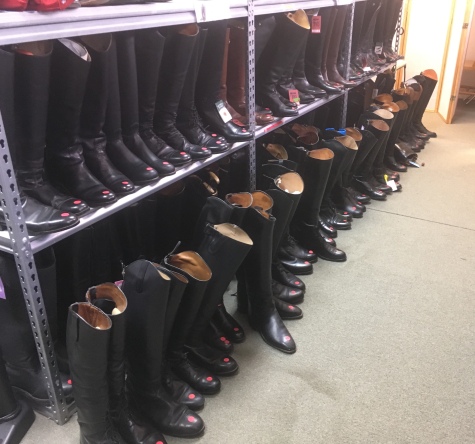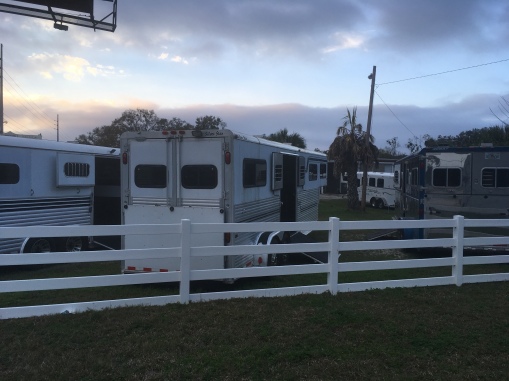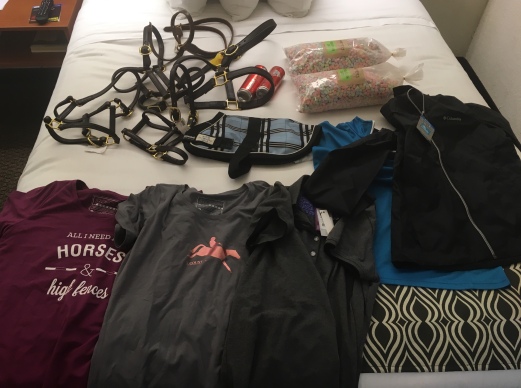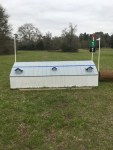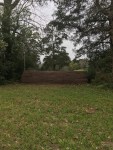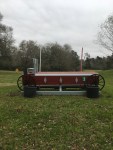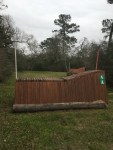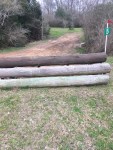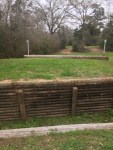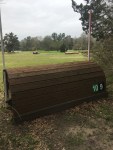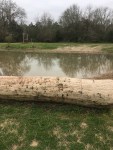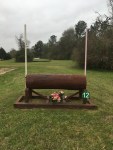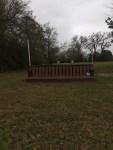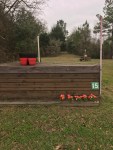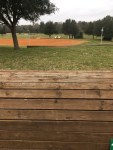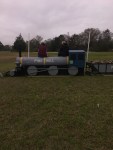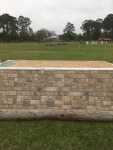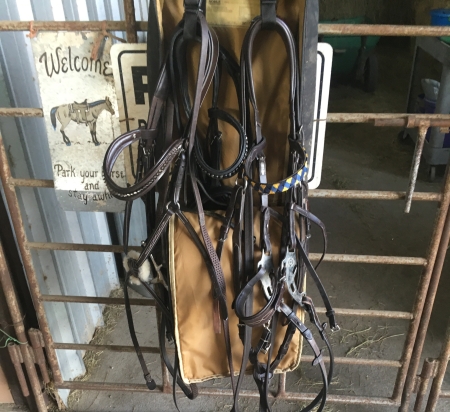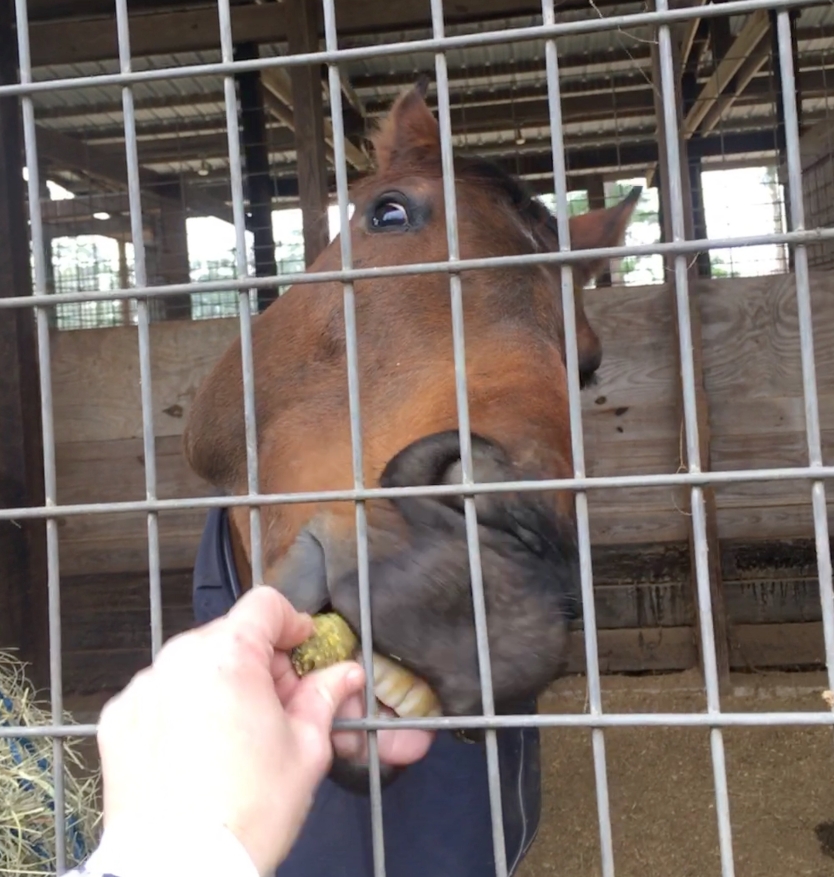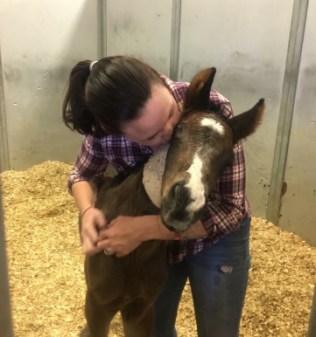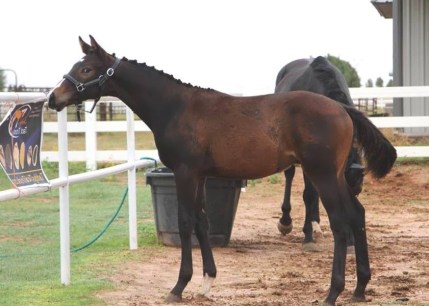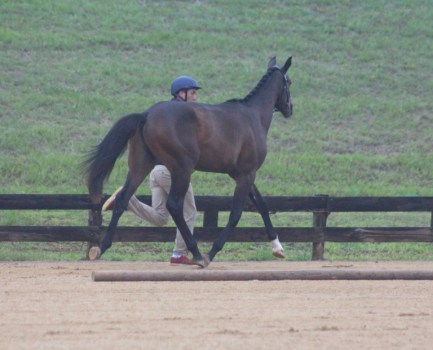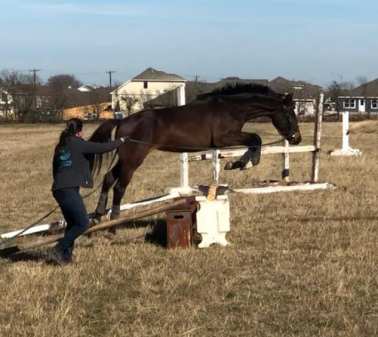This is a tough life I’m living here in Ocala this week y’all. I’m sweaty and sunburned and spent all day yesterday looking at/talking about horses. On a Wednesday. In February. This does not suck.

Anyway, Day 1 of the YEH/FEH educational symposium was dedicated mostly to the Young Event Horse side of things. In the morning we were in the classroom, and Marilyn Payne kicked things off with an overview of the YEH judging, what they’re looking for, and what new changes there are for 2019. I’m pretty familiar with all that by now, but I’m always into PowerPoint slides and bullet points.
Maxime Livio was in the room and commented that, in his opinion, he would like to see the pedigree considered in the judging. There was a lot of opposition to that, from basically everyone else, even if I tend to agree with where he’s coming from. It’s definitely important, especially from the “blood” point of view, but on the other hand it’s hard to make something like that a judgeable criteria.

From there we moved on to looking at videos of horses when they were 5. For this they used footage from Bundeschampionate of horses like FischerRocana and So Is Et, but were being sneaky by playing the videos first, getting opinions from Maxime and the judges in the room, and then revealing who the horse/it’s career was at the end. There were a couple videos of not-very-successful horses hidden in there, for contrast. It was kind of interesting. What made it most interesting, IMO, were Maxime’s comments. He has a keen eye for a horse and is very good at explaining what he’s seeing, what things he can look past, and what things are dealbreakers.
Amid all of that conversation, my favorite notes of the day came about. Maxime said that there are 5 basic criteria he’s looking at when he’s evaluating a horse for top level (modern long format) sport, and he puts them in this order:
1) Pedigree. Maxime wants to see lots of blood, a horse that is capable of galloping for 10-12 minutes and still having some stamina left at the end. He said that when horses run out of stamina, that’s when things get dangerous.
2) Soundness. This is where he looks at the conformation, the straightness and correctness of the limbs, the lungs and cardio system, and obviously gets a vet opinion.
3) Personality. Mainly: heart. He wants a horse that really has a strong desire to do the job, is always looking to go forward to the next fence, and will always try to please it’s rider. He used FischerRocana as a prime example here of a very average quality horse that has so much heart, it makes her into a great horse.
4) Jump Quality and 5) Movement. These were kind of lumped together for him.
He went on to explain that the reason he ranks them this way is because more importance is given to the things you cannot change or improve. You can’t change the fact that the horse’s type is too heavy or pedigree is lacking blood. You need soundness obviously, but good management can improve it slightly, so there is a little bit of possibility for improvement. He felt that personality is mostly innate, but that it could also be improved upon a good bit with correct training and riding. Jump quality and movement, he said, have the most capacity to improve, and in his opinion can even be improved as much as 70%. So he starts with the things he can’t change as the most important qualities when he’s looking for a horse. While the ranking order of these characteristics might change depending on what type of horse you’re looking for, I like his approach of placing more importance on the things you can’t change. That’s a smart way to think about any horse purchase.

I loved how Maxime broke this down. It was very well thought out and reasoned, and it’s nice to see a rider so invested in the importance of pedigree and desiring a lot of blood in his horses. This theme carried on into the afternoon sessions as well with the demo horses, which I’ll get to in a minute.
After looking at the videos of the 5yo’s, Christian Schacht did a presentation on conformation. Despite having what most would consider to be boring subject matter, Christian was super entertaining to listen to. He knew how to add humor to keep people engaged. As for the confirmation parts, his big emphasis was on the horse’s balance. He wants a horse that isn’t too downhill as to be on the forehand but also isn’t too uphill as to be inefficient in the gallop and jump. He also likes to see hocks that are a bit lower and closer together, making it easier for a horse to sit and push off the ground at the fences, especially at deeper distances. He called the hooves “the second heart of the horse – no hoof, no horse”, ie also a very critical component.
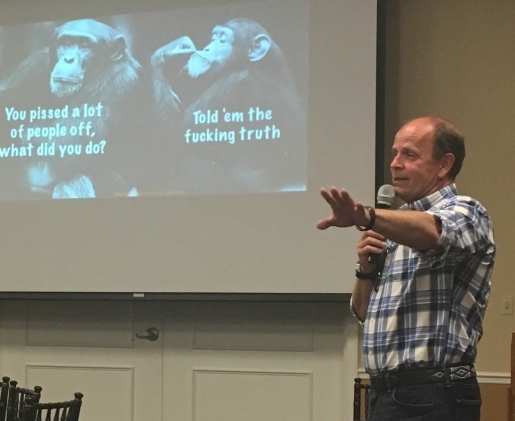
One passing comment he made that I thought was interesting was his observation that when horses toe out (not a big deal in his opinion) usually it’s more pronounced on the right front than the left. This is true for Henry and Presto, which is probably why it stood out to me. Oh, and he noted that slight roach backs are not uncommon in jumpers, and are often considered to help make the horse more powerful.
After lunch we headed outside to watch some 4yo horses do dressage. There were 3 very different types of horses, which made for good contrast. Maxime’s favorite was the chestnut OTTB. Yes, you’re noticing a trend with him and blood horses. 😉

Then we walked down to the XC field and got to see two groups of 5yo’s do a mock YEH class. There were 5 showjumps and then 7 or 8 XC fences. Maxime would comment on the horses after each of them went, and then the judges discussed how they would score them. The horses ran the gamut from unshown to a Bundeschampion, so it was really interesting to compare and contrast, and then hear all the opinions on what level the horse might have potential for. Maxime was generally more forgiving of little mistakes and green moments than the judges were, and wasn’t afraid to chime in to a discussion and offer his perspective or respectfully disagree. It made for really good conversation.

Maxime’s favorite horse of the day was the last one to go, a full TB that came off the track last year. Maxime liked it a lot, and then when it was revealed that it was a full TB, the like turned to love, and he declared that that’s the one he would buy. It’s funny to me that everywhere we’ve gone, the European riders really love and seek out the mostly or full blood horses intentionally, and place a lot of value on them. Here they’re often seen as “less than”. Many of the judges seemed surprised that a horse that nice was full TB, as if it was special IN SPITE of that. To Maxime, the horse was special BECAUSE of that. It’s an interesting dichotomy.
Overall it was a very educational day (although at times I wanted to hang myself with my lanyard at the talk of what “breed” of Warmblood each horse was. They’re registries, not breeds, and the registry tells you nothing about the horse’s bloodlines. Alas, I digress..) and I greatly valued having Maxime’s input. I found him to be very educated and confident in his views, yet also humble and open to discussion. He had a lot of great little quotable tidbits that were already captured perfectly by Leslie Mintz in this article. Go read it!
I was also impressed that pretty much every rider knew the pedigree of their horse and was able to recite it when asked. This is very encouraging to me, and a trend in the right direction.
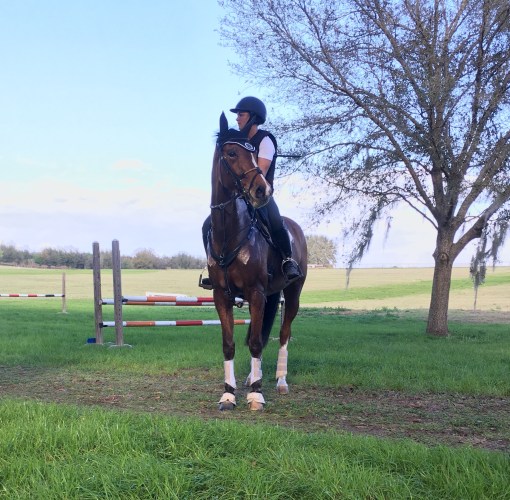
Today we move on to the FEH side of things, with the younger horses in hand, and freejumping. I’m in horse nerd heaven.


